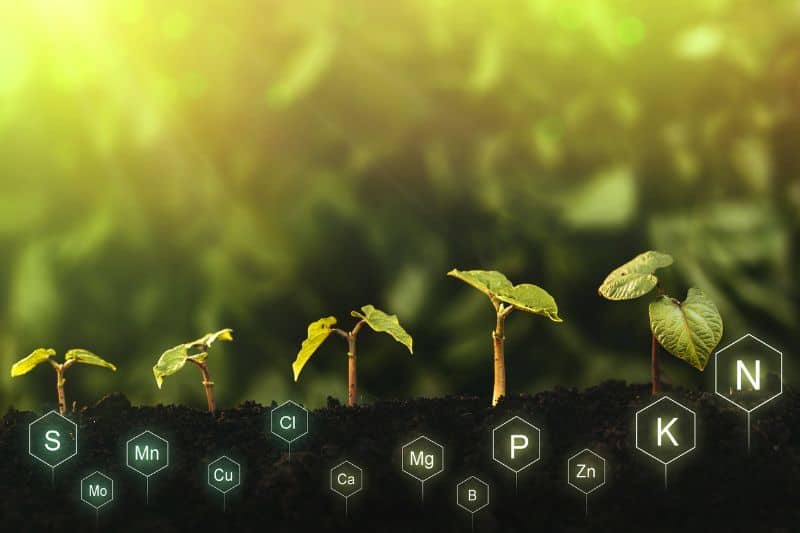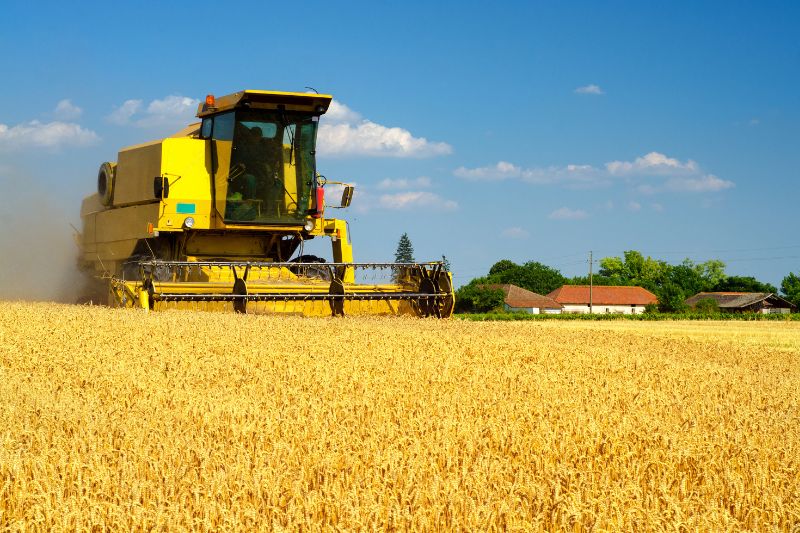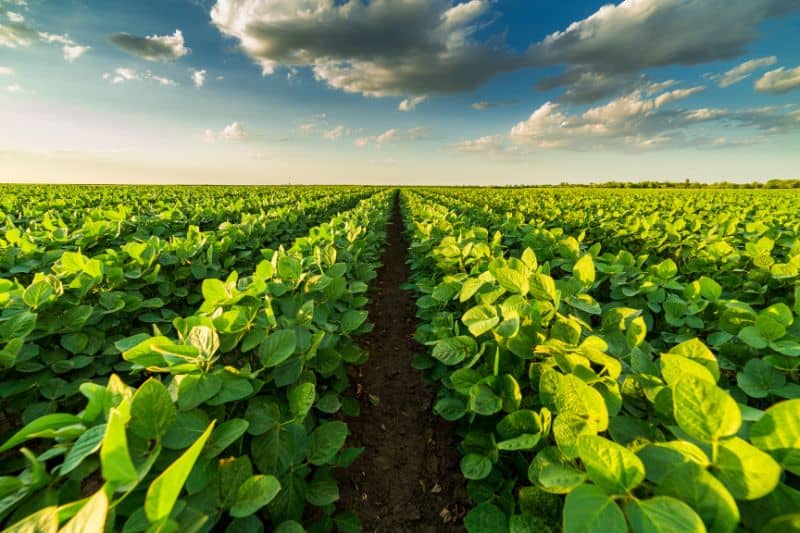In agriculture, monoculture is the agricultural practice of cultivating a single crop, livestock species, or plant of one genetically uniform species at a time. But it also entails a farming or agricultural production system practiced at a single time.
Now, monoculture has been used in industrial and organic farming, allowing for increased efficiency in planting and harvesting, as well as lowering costs for farmers.
A great example is in the growing of only corn or beans for the entire planting season. And while it’s a highly practiced agricultural phenomenon, there is no rainbow and sunshine for monoculture, one of the drawbacks being that it increases the risk of exposure to pests and diseases.
Monoculture, in contemporary agricultural understanding, emphasizes crop specialization as it involves growing a single crop utilizing the majority or whole of the land.
It’s a practice that has allowed increased efficiency in planting and harvesting, but it has also been criticized for resulting in unsustainable environments. It has been linked to the build-up of disease pressures, reduced nutrients in the soil or soil degradation, and deforestation.
Of course, that’s not all about the pros and cons. For the full insights, here are the advantages, disadvantages, and types of monoculture.
Advantages of Monoculture
Some of the notable advantages of embracing monoculture in agriculture include:
1. Simplicity
Monocultures are very simple farming and agricultural systems. It primarily involves soil preparation, irrigation, and the input of chemicals where needed – all focused on the preferences of one particular plant species.
As such, the fields are significantly specialized towards the maximum production of yields from the specific crop. Treating pests and diseases is also done without considering the effects of the treatment on other plants, as there are none.
Also, during harvesting, monocultures provide uniformity as it is easy to collect the desirable parts of the plant through straightforward techniques, which would otherwise be destructive if the crop was sharing the same field with others.
2. Results in Higher Yields
Each plant goes through the same standardized planting, maintenance, and harvesting process for monoculture farming. It, therefore, results in higher yields and lower costs.
For animals or livestock, they go through the same procedure of birth, development, and maturity. The process also results in lower costs on the part of the farmer as well as excellent yields when the animals become mature.
3. Lowers the Amount of Extra Land Required
Monoculture farming uses synthesized fertilizers, reducing the amount of additional land needed to produce food. The animals, at the same time, would require the same fertilization mechanisms.
4. It Is Efficient and More Profitable to The Farmer
When one distinct crop is grown at a time, it means only one method of harvesting will be needed, and that makes the process more efficient and more profitable for the farmer.
Crops best suited for a field can be planted against harsh climatic conditions like drought, winds, and short growing seasons, favoring the crop and thus having less impact on the yield. The form of agriculture is common for growing wheat, vegetables, barley, or unique species of fruit in vast fields.
Disadvantages of Monoculture
Despite the numerous benefits of monoculture, this agricultural practice also has a fair share of cons. Here are some of the notable disadvantages:

1. Destroys Soil Nutrients
Naturally, the soil contains nutrients and other functions. Monoculture eliminates all such functions due to the practice of only planting or rearing one type of crop or animal breed. As a result, there is no range of insect and soil microorganism species due to the lack of crop diversity that promotes insect and soil microbe biodiversity.
It also means there are no varieties in the plants to naturally provide nutrients to the soil that can improve the nutrient content of the soil. Also, it kills microorganisms and bacteria in the land, undermining its integrity.
2. Results in The Use of Harmful Chemicals
With the nutrients in the soil eliminated, farmers have to introduce artificial products that could replicate the functions and nutrients lost. Cases in point is the use of large amounts of herbicides, fertilizers, bactericides, and insecticides.
These synthetic chemicals are used to prevent further damage to their crops by harmful insects, bacteria, and weeds.
Unfortunately, the chemicals leave traces in crops meant for human consumption, meaning they end up in the food chain and could result in serious health consequences due to bio-accumulation.
3. Pollutes Groundwater Supplies
Even if the plant is harvested, the chemicals used to mimic the natural soil nutrients remain in the soil. Unfortunately, these products are inorganic, so they cannot be processed by microorganisms in the soil into organic matter.
As such, they end up leaching through the ground and eventually pollute groundwater supplies.
But that’s not all — these chemicals cause the altering of ecosystems that may be great distances away from the location of use. That may kill, harm, or deplete the diversity and vibrancy of neighboring ecosystems in the long run.

4. Adversely Affects and Alters the Natural Ecosystem
The overuse of such inorganic chemicals forces organisms to evolve and develop resistance to artificial insecticides and herbicides. As more inorganic compounds continue to be poured into the soil, it affects natural ecosystems detrimentally.
5. Destroys the Overall Soil’s Degradation and Erosion
Using chemical fertilizers in monoculture farming also destroys the soil’s health. When the crops are harvested, there remains no natural protection for the soil from erosion by wind or rain. Also, the topsoil does not become replenished, mainly because of erosions.
All of these combined further degrade the soil, making it unusable for agriculture. It might also lead some people to clear forests to acquire new agricultural lands, starting the damaging cycle all over again.
6. Requires Lots of Water to Irrigate
Since monoculture results in the topsoil cover being harvested all at the same time, the topsoil loses elements that could help it retain moisture. Contemporary monoculture agricultural practices, therefore, require vast amounts of water to irrigate the crops.
The water is pumped from rivers, lakes, and water reservoirs at high rates, depleting the aquatic resources. It also means the water resources will, in turn, be affected by the inorganic chemicals being pumped into the crops and soil by the farmers.

7. Uses a Lot of Fossil Fuel Energy
Selling the crops, sorting, packaging, and transporting them requires substantial fossil fuel energy. The energy used, the chemical fertilizers and pesticides, and other industrialized methods of producing such foods greatly contribute to environmental pollution and climate change. This means monoculture continues to jeopardize the environment for future generations.
Examples of Monoculture
Some of the common examples of monoculture include:
1. Potato Farming in Ireland
The most significant case of monocultural farming is in Ireland. In the 1840s, there was substantial farming of the lumper, a variety of potatoes grown monoculturally. The lumpers were inexpensive food used to feed the Irish people. The potato variety was propagated vegetatively with no genetic variation.
Unfortunately, a potato blight known as the Phytophthora infestans arrived in the country from the Americas, and the lumper was hardest hit. It had no resistance to the disease, and as a result, nearly all the potato crops in Ireland completely failed.
2. Cattle Rearing in The US
Modern-day livestock production systems rely on a handful of highly specialized breeds. Monoculturally reared cows risk lacking desirable traits like fertility, vigor, and resistance to diseases. Many end up dying because they do not have the genes to prevent certain conditions.
A single bull widely used in monocultural farming might be a carrier of a gene mutation that could cause diseases. Such an issue arose in 1990 in the United States, with approximately 600,000 out of 4 million Holstein cattle affected.

3. Forestry
In forestry, monoculture relates to the planting of a unique species of trees. It provides more yields and more efficient harvesting. Monoculture stands of trees are planted and later harvested as a unit. It can be considered a risky venture because, for starters, there is no diversity in the sizes of the trees, where you would find mature and young trees together.
Secondly, since they are all the same size, they have limited openings and are more prone to wildfires. It also puts all the trees at considerable risk of pathogen and insect attacks and adverse environmental conditions.
4. Banana Farming in The US
Almost all bananas consumed in the United States in the 1950s were grown monoculturally. This farming was practiced as it was efficient and produced tastier bananas with small seeds.
Unfortunately, the tiny seeds meant they were not suitable for planting, resulting in all-new bananas being grown from the cut suckers of another plant.
The asexual form of growing them resulted in identical bananas with a similar genetic makeup, leading to them lacking resistance to fungal diseases. By the 1960s, farmers had to switch to a different form of banana – cultivated in the same way as the former, meaning diseases could also attack them as their predecessors.
5. Cultivation of Beans in Central America
Farmers, especially in Nicaragua, fell trees to make space for more land to cultivate beans. By destroying the forests, rains become inconsistent, and then came extended periods of a dry spell — eventually affecting the quality and quantity of the produce.
6. Large Scale Production of Corn
Corn farming for commercial purposes is very popular across various nations worldwide, including Brazil, in the U.S. states like South Dakota, Ohio, Lowa, and Nebraska, and in sub-Saharan African countries where Maize is grown as a staple food. Thousands of acres of land are often dedicated to the growth of corn in these regions.






